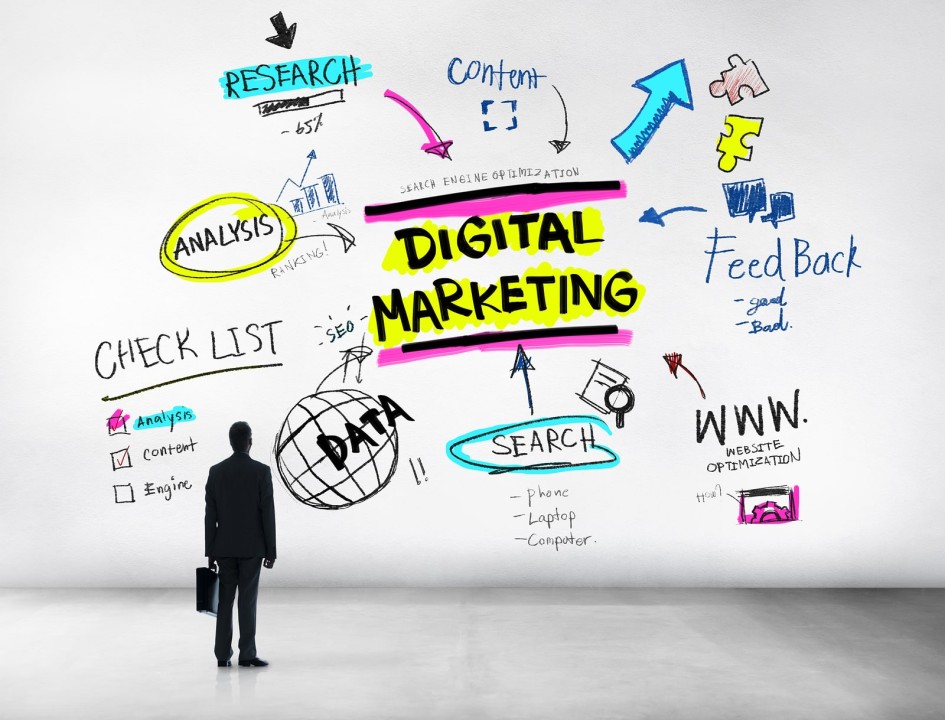Managing your business finances wisely is essential for long-term success and sustainability. Whether you’re running a small startup or a large corporation, sound financial management is crucial. Here are some key steps to achieve financial fitness for your business:
- Create a Business Budget:
- Start by creating a comprehensive budget that outlines your income and expenses. This budget should cover both short-term and long-term financial goals. Make sure to include all possible expenses, such as rent, salaries, utilities, and marketing costs.
- Regularly review and update your budget to ensure it remains accurate and reflects your business’s changing needs.
- Monitor Cash Flow:
- Cash flow management is critical. Keep a close eye on the money coming in and going out of your business. Poor cash flow can lead to financial problems even if your business is profitable on paper.
- Consider using cash flow forecasting tools to predict future cash flow trends and make informed decisions.
- Separate Personal and Business Finances:
- Open a separate business bank account and credit card to keep your personal and business finances distinct. This simplifies accounting and helps you maintain clear financial records.
- Implement Strong Financial Record-Keeping:
- Maintain accurate and organized financial records, including income statements, balance sheets, and cash flow statements. This documentation is vital for tracking your business’s financial health and making informed decisions.
- Manage Debt Wisely:
- Avoid taking on unnecessary debt. When borrowing is necessary, carefully assess the terms, interest rates, and repayment schedules of loans or credit lines.
- Create a plan to pay down existing debts systematically, starting with high-interest loans.
- Control Costs:
- Regularly review your expenses to identify areas where you can cut costs. Small savings can add up over time and improve your bottom line.
- Negotiate with suppliers for better terms and prices.
- Set Financial Goals:
- Establish clear financial goals for your business, such as revenue targets, profit margins, or cost reduction objectives. These goals will provide direction and motivation for your financial management efforts.
- Build an Emergency Fund:
- Maintain an emergency fund to cover unexpected expenses or economic downturns. Having a financial safety net can prevent your business from going under during tough times.
- Invest Wisely:
- Make strategic investments that align with your business goals and have a reasonable expectation of providing a return on investment (ROI).
- Diversify your investments to reduce risk.
- Seek Professional Advice:
- Consider working with a financial advisor or accountant who specializes in business finances. They can provide expert guidance and help you make informed decisions.
- Stay Informed and Adaptable:
- Keep up with industry trends, economic conditions, and changes in tax regulations that may impact your business finances.
- Be prepared to adapt your financial strategy as needed to respond to changing circumstances.
- Plan for Taxes:
- Understand your tax obligations and plan accordingly. Failure to manage taxes can lead to penalties and financial stress.
- Consider tax-saving strategies such as tax deductions and credits available to your business.
Remember that financial fitness is an ongoing process. Regularly assess your financial performance, adjust your strategies as needed, and remain committed to prudent financial management to ensure the long-term success of your business.
Digital marketing is a dynamic field that constantly evolves to adapt to changing consumer behavior and technological advancements. What’s considered hot or not can vary depending on the industry and target audience. As of my last knowledge update in September 2021, here are some digital marketing trends that were gaining traction:
What’s Hot:
- Video Marketing: Video content continues to dominate. Short-form videos on platforms like TikTok and Instagram Reels, as well as long-form content on YouTube, are effective for engagement and brand building.
- Content Marketing: High-quality, informative, and personalized content remains crucial. Blog posts, podcasts, webinars, and ebooks are effective for both B2B and B2C businesses.
- Influencer Marketing: Collaborating with influencers in your niche can help you reach a highly targeted audience. Micro-influencers with smaller but more engaged followings are gaining popularity.
- Social Commerce: Social media platforms are increasingly integrating e-commerce features, allowing users to shop directly from posts and stories. Platforms like Instagram Shopping and Facebook Marketplace are examples of this trend.
- Artificial Intelligence (AI) and Chatbots: AI-driven chatbots provide instant customer support, streamline sales processes, and offer personalized recommendations. AI also helps in data analysis for better targeting.
- User-Generated Content (UGC): Encouraging customers to create content related to your brand can build trust and authenticity. Reposting UGC can be a powerful marketing tool.
- Voice Search Optimization: With the proliferation of voice-activated devices like smart speakers, optimizing your content for voice search is becoming increasingly important.
What’s Not as Hot:
- Email Spam: Overly aggressive email marketing tactics can backfire. Focus on permission-based email marketing and deliver valuable content to subscribers.
- Keyword Stuffing: Keyword stuffing for SEO purposes is outdated. Modern SEO emphasizes high-quality, user-friendly content and semantic search.
- Static Websites: Static websites are giving way to dynamic, responsive designs that provide better user experiences and SEO performance.
- Overlooking Mobile Optimization: Neglecting mobile optimization is a mistake, as the majority of internet traffic now comes from mobile devices.
- Ignoring Data Privacy: With the rise of privacy concerns and regulations like GDPR and CCPA, businesses must be transparent and respectful of user data.
- Generic Social Media Posts: Posting generic content on social media without a strategy doesn’t yield results. Focus on content that engages your specific target audience.
- Ignoring Analytics: Neglecting data analysis and insights from analytics tools can lead to missed opportunities for optimization.
Keep in mind that the digital marketing landscape is continually evolving. To stay competitive, you should regularly assess your strategies and adapt to emerging trends and technologies. Additionally, consider the specific needs and preferences of your target audience to determine which trends are most relevant for your business.

The Customer-Centric Approach: Keys to Customer Satisfaction
A customer-centric approach is essential for building strong customer relationships, enhancing brand loyalty, and ultimately driving business success. Here are key strategies and principles to adopt for delivering excellent customer satisfaction:
- Deep Understanding of Customer Needs:
- Invest in market research and data analysis to gain insights into your customers’ preferences, pain points, and behaviors.
- Create detailed customer personas to represent your target audience segments.
- Personalization:
- Tailor your products, services, and marketing messages to individual customer preferences whenever possible.
- Use customer data to provide personalized recommendations and offers.
- Active Listening:
- Encourage feedback from customers through surveys, reviews, and social media interactions.
- Act on feedback promptly, showing customers that you value their opinions and are committed to improvement.
- Responsive Customer Service:
- Offer multiple channels for customer support, including phone, email, chat, and social media.
- Ensure that response times are quick, and that support agents are knowledgeable and empathetic.
- Consistency Across Channels:
- Provide a consistent experience and messaging across all customer touchpoints, whether it’s your website, social media, or in-store interactions.
- Employee Training and Empowerment:
- Empower your employees to make decisions that benefit the customer, especially when resolving issues.
- Invest in ongoing training to ensure your staff understands the importance of customer-centricity.
- Transparency:
- Be transparent about your products, pricing, and policies.
- Avoid hidden fees or complex terms and conditions that can erode trust.
- Proactive Problem Solving:
- Anticipate customer needs and issues, and address them before they become major problems.
- Implement preventive measures and proactive customer service.
- Customer Journey Mapping:
- Understand the customer’s journey from awareness to purchase and beyond.
- Identify pain points and opportunities to improve the experience at each stage.
- Value Delivery:
- Continuously strive to provide exceptional value to customers through your products or services.
- Communicate the unique benefits and advantages your business offers.
- Reward Loyalty:
- Implement loyalty programs or offer special perks to repeat customers.
- Recognize and appreciate loyal customers with exclusive offers or personalized thank-you messages.
- Data Security and Privacy:
- Safeguard customer data and respect their privacy by complying with data protection regulations.
- Clearly communicate your data handling practices to build trust.
- Long-Term Relationships:
- Focus on building long-term, sustainable relationships with customers rather than chasing short-term profits.
- Keep in touch with customers even after the initial sale.
- Competitor Benchmarking:
- Monitor your competitors’ customer-centric efforts and seek opportunities to differentiate yourself.
- Learn from both their successes and their mistakes.
- Continuous Improvement:
- Continually assess and refine your customer-centric strategies based on changing market dynamics and feedback.
- Stay agile and adapt to evolving customer expectations.
By adopting a customer-centric approach and consistently delivering exceptional value and service, you can foster strong customer satisfaction, which in turn can lead to increased customer retention, positive word-of-mouth marketing, and sustained business growth. Remember that satisfied customers are more likely to become brand advocates and refer others to your business.

Innovation is crucial for small business growth and long-term success. Small businesses often have the advantage of being nimble and adaptable, making it easier to implement innovative strategies. Here are some innovative approaches to foster growth:
- Leverage Technology:
- Embrace digital tools and technologies to streamline operations and improve efficiency.
- Explore automation, AI, and machine learning for tasks like data analysis, customer support, and marketing.
- Online Presence and E-commerce:
- Develop a robust online presence through a professional website and active social media profiles.
- Consider e-commerce capabilities to expand your customer base beyond your local area.
- Customer-Centric Solutions:
- Focus on understanding and meeting the unique needs of your target audience.
- Implement personalization strategies to enhance the customer experience.
- Collaborations and Partnerships:
- Seek collaborations with complementary businesses to cross-promote products or services.
- Partner with other businesses for joint ventures or co-creation of innovative solutions.
- Diversification of Products or Services:
- Explore opportunities to diversify your offerings while staying aligned with your core competencies.
- Conduct market research to identify unmet needs and potential growth areas.
- Subscription Models and Recurring Revenue:
- Consider offering subscription-based services or products to create a consistent stream of revenue.
- Subscriptions can improve customer retention and predictability of income.
- Crowdsourcing and Crowdfunding:
- Use crowdfunding platforms to raise capital for new projects or product development.
- Solicit ideas and feedback from customers and the community through crowdsourcing.
- Employee Innovation Programs:
- Encourage employees to contribute ideas and innovations.
- Establish a culture of continuous improvement and reward employees for creative solutions.
- Sustainable and Eco-Friendly Practices:
- Embrace sustainability as a core value, as many consumers prefer eco-friendly products and services.
- Consider green practices not only as a way to reduce costs but also as a selling point.
- Data-Driven Decision-Making:
- Use data analytics to gain insights into customer behavior and market trends.
- Make informed decisions based on data to optimize strategies and operations.
- Franchising or Licensing:
- If applicable, explore franchising or licensing opportunities to expand your business model to other locations or markets.
- Customer Feedback Loops:
- Create feedback mechanisms to gather insights directly from customers.
- Act on this feedback to make improvements and innovations in your products or services.
- Focus on Employee Development:
- Invest in employee training and development to foster a culture of innovation.
- Empower employees to contribute to the growth and improvement of the business.
- Competitive Analysis:
- Continuously monitor your competitors and identify gaps or weaknesses in their offerings.
- Use this information to innovate and differentiate your business.
- Networking and Industry Involvement:
- Attend industry events, join associations, and participate in networking opportunities.
- Stay updated on industry trends and connect with potential partners or investors.
Remember that innovation requires a willingness to take calculated risks and adapt to changing circumstances. It’s also essential to involve your team and engage with your customers in the innovation process. Keep testing and refining your strategies, and be prepared to pivot when necessary to achieve sustainable small business growth.

Artificial Intelligence (AI) is having a profound impact on various aspects of business operations. It’s transforming the way companies operate, make decisions, and interact with customers. Here are some key ways in which AI is influencing business operations:
- Automation of Routine Tasks:
- AI-powered automation tools can handle repetitive and time-consuming tasks, such as data entry, invoicing, and payroll processing. This increases efficiency and reduces human error.
- Improved Customer Service:
- Chatbots and virtual assistants powered by AI provide 24/7 customer support, answer frequently asked questions, and assist with issue resolution.
- AI-driven personalization enhances customer experiences by tailoring recommendations and communications.
- Data Analysis and Insights:
- AI can analyze vast amounts of data quickly, uncovering patterns and trends that humans might miss.
- Predictive analytics helps businesses make informed decisions based on data-driven forecasts.
- Supply Chain Optimization:
- AI can optimize inventory management, demand forecasting, and logistics planning.
- Predictive maintenance ensures machinery and equipment are serviced before they fail, reducing downtime.
- Enhanced Marketing and Sales:
- AI improves lead generation by identifying potential customers based on their online behavior and preferences.
- AI-driven chatbots and recommendation engines can upsell and cross-sell products or services.
- Fraud Detection and Security:
- AI algorithms can detect unusual patterns in financial transactions, helping to prevent fraud.
- Cybersecurity systems employ AI to identify and mitigate threats in real time.
- Human Resources and Talent Management:
- AI aids in the recruitment process by screening resumes, conducting initial interviews, and matching candidates to job requirements.
- Employee engagement and performance can be monitored and improved using AI-driven analytics.
- Content Creation and Curation:
- AI-generated content, such as articles, reports, and product descriptions, can save time and resources.
- AI algorithms curate content recommendations for users, improving content discovery.
- Quality Control and Inspection:
- AI-powered computer vision systems can inspect and identify defects in manufacturing processes.
- This ensures products meet quality standards and reduces waste.
- Healthcare and Life Sciences:
- AI assists in medical diagnostics, drug discovery, and treatment recommendations.
- It can process and analyze large volumes of medical data for research and patient care.
- Financial Analysis and Trading:
- AI-driven algorithms analyze financial data and execute trades with minimal human intervention.
- AI can identify investment opportunities and manage portfolios more efficiently.
- Energy Efficiency:
- AI optimizes energy consumption by predicting usage patterns and adjusting HVAC systems and lighting accordingly.
- It enhances the efficiency of renewable energy sources like solar and wind.
- Customized Product Development:
- AI can analyze customer feedback and preferences to inform product design and development.
- This results in products that better meet customer needs.
- Regulatory Compliance:
- AI can help businesses stay compliant with ever-changing regulations by monitoring and flagging potential compliance issues.
- Remote Work Enablement:
- AI-driven collaboration tools and virtual meeting platforms have become essential for remote work, improving productivity and connectivity.
While AI offers numerous benefits to business operations, it also raises ethical and privacy concerns. Companies need to ensure they use AI responsibly and transparently, adhering to data privacy regulations and considering the social impact of their AI initiatives. Additionally, investing in employee training and change management is crucial to successfully integrate AI into business operations.